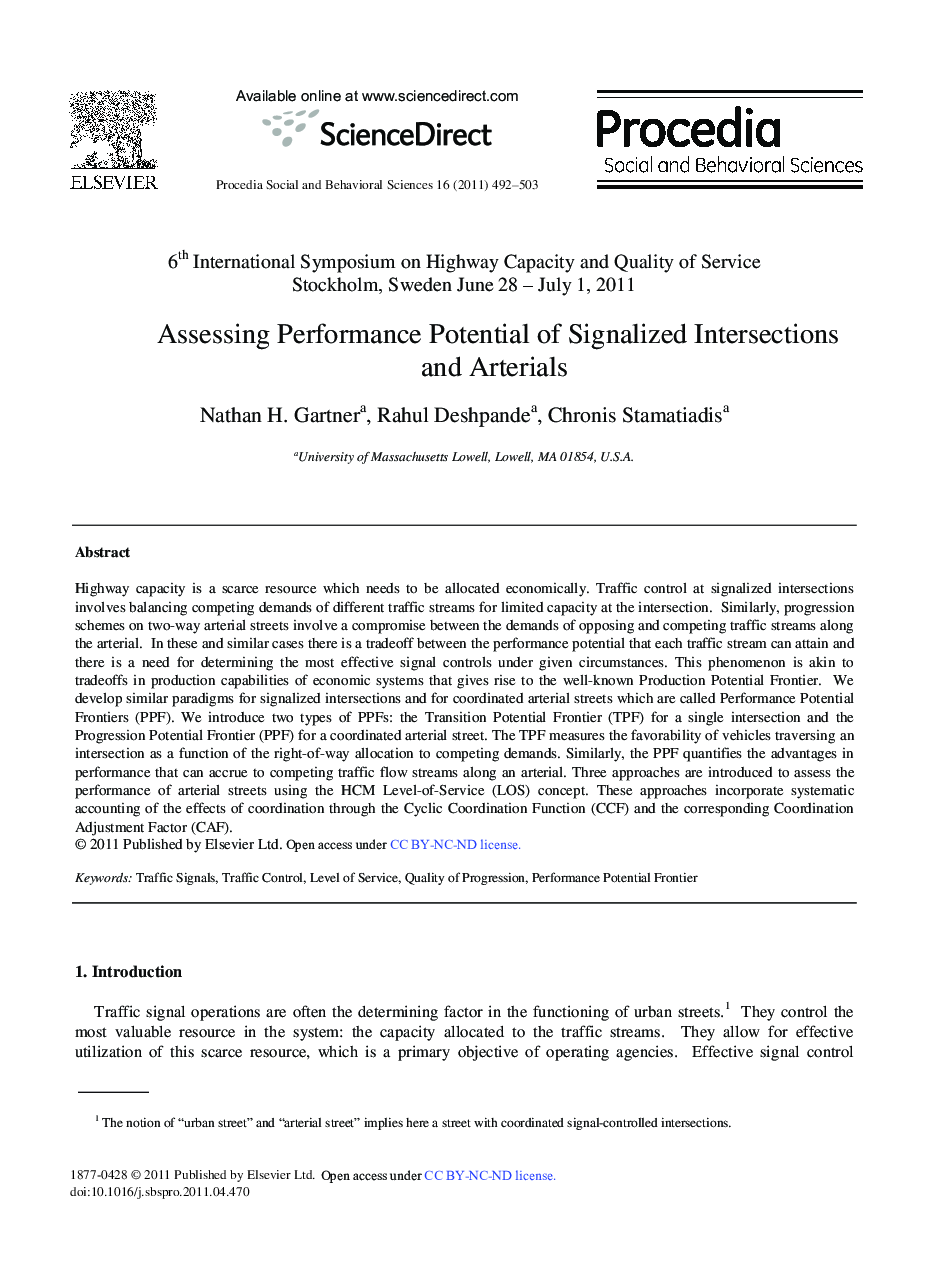| Article ID | Journal | Published Year | Pages | File Type |
|---|---|---|---|---|
| 1124181 | Procedia - Social and Behavioral Sciences | 2011 | 12 Pages |
Highway capacity is a scarce resource which needs to be allocated economically. Traffic control at signalized intersections involves balancing competing demands of different traffic streams for limited capacity at the intersection. Similarly, progression schemes on two-way arterial streets involve a compromise between the demands of opposing and competing traffic streams along the arterial. In these and similar cases there is a tradeoff between the performance potential that each traffic stream can attain and there is a need for determining the most effective signal controls under given circumstances. This phenomenon is akin to tradeoffs in production capabilities of economic systems that gives rise to the well-known Production Potential Frontier. We develop similar paradigms for signalized intersections and for coordinated arterial streets which are called Performance Potential Frontiers (PPF). We introduce two types of PPFs: the Transition Potential Frontier (TPF) for a single intersection and the Progression Potential Frontier (PPF) for a coordinated arterial street. The TPF measures the favorability of vehicles traversing an intersection as a function of the right-of-way allocation to competing demands. Similarly, the PPF quantifies the advantages in performance that can accrue to competing traffic flow streams along an arterial. Three approaches are introduced to assess the performance of arterial streets using the HCM Level-of-Service (LOS) concept. These approaches incorporate systematic accounting of the effects of coordination through the Cyclic Coordination Function (CCF) and the corresponding Coordination Adjustment Factor (CAF). © 2011 Published by Elsevier Ltd.
